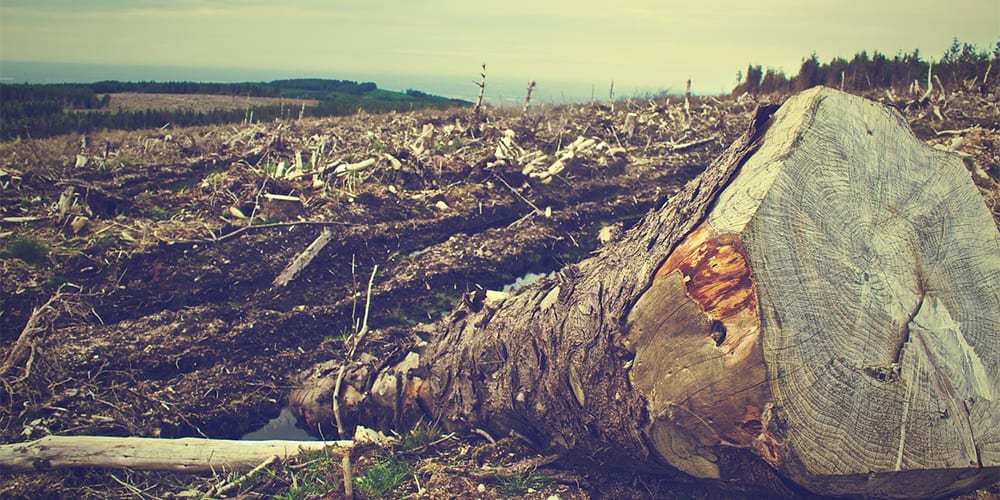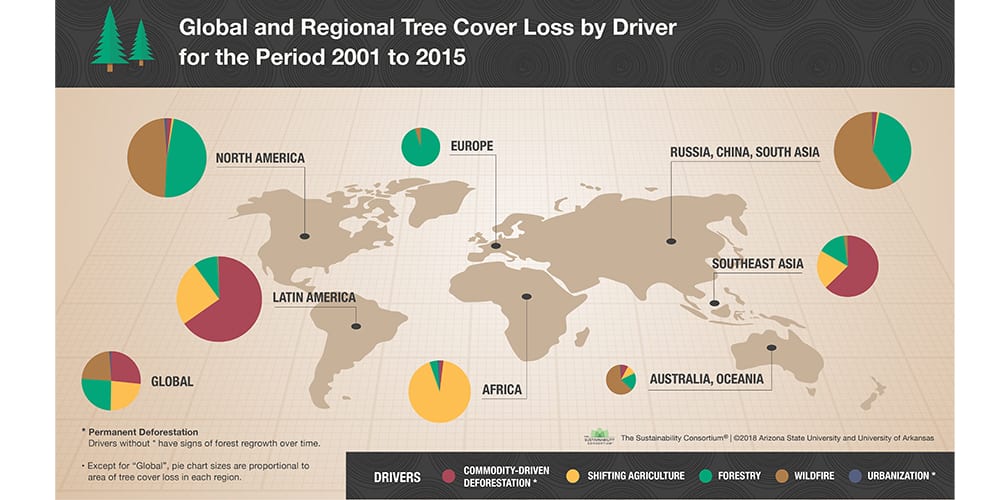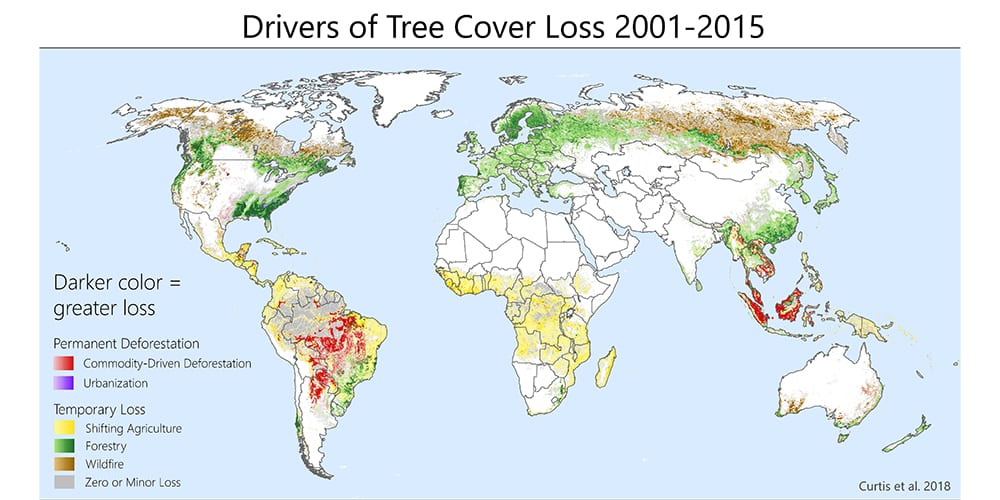One-Fourth of Forest Loss Permanent; Global Deforestation Not Slowing Down

The study was conducted by reseachers at The Sustainability Consortium; a global organization jointly administered by the University of Arkansas and Arizona State University; the World Resources Institute, a global research organization; and the University of Maryland.
The study revealed a geographic shift in deforestation, which is permanent forest loss, from Brazil to Southeast Asia over the past 15 years, but the overall rate of deforestation globally had not slowed down.

“Since 2010, leaders of nearly 450 companies signed commitments to achieve zero deforestation in their supply chains by 2020,” said Christy Slay, director of technical alignment for The Sustainability Consortium and co-author of the study. “Consumers and environmental organizations are demanding it, and companies know it is the socially responsible thing to do. Yet companies find it difficult to determine the source of their supply beyond the location of their direct supplier. Our findings, now incorporated into the consortium’s commodity mapping tool, will help companies predict where agriculture and wood fiber products are sourced and what deforestation risk is present.”
The authors used nearly 4,700 satellite images to train a computer model to identify unique patterns that revealed the causes of recent tree cover loss. Using a 10-by-10 kilometer grid for the entire globe, the computer model helped identify the most likely causes of forest disturbance – commodity production, forestry, shifting agriculture, wildfire and urbanization.

The major drivers of forest loss:
- 27 percent — commodity production
- 26 percent — forestry operations
- 24 percent — shifting agriculture
- 23 percent — wildfires
- 5 percent — urban development
“Although many changes to tree cover were temporary, such as when a forest recovered from a wildfire or when timber farms were replanted, patterns seen in the imagery showed that a significant proportion of global forests are not growing back,” said Philip Curtis, consultant for The Sustainability Consortium and the study’s lead author.
The study’s findings will be publicly available on Global Forest Watch, the leading global forest monitoring tool run by the World Resources Institute.



